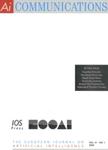版权所有:内蒙古大学图书馆 技术提供:维普资讯• 智图
内蒙古自治区呼和浩特市赛罕区大学西街235号 邮编: 010021

作者机构:Jain Univ Bangalore Karnataka India Reva Univ Bangalore Karnataka India Shridevi Inst Engn & Technol Tumkur India
出 版 物:《AI COMMUNICATIONS》 (人工智能通讯)
年 卷 期:2015年第28卷第4期
页 面:693-708页
核心收录:
学科分类:08[工学] 0812[工学-计算机科学与技术(可授工学、理学学位)]
基 金:Visvesvaraya Technological University (VTU) Karnataka India [VTU/Aca./2011-12/A-9/753]
主 题:Wireless Sensor Networks trusted neighbors software agents error resilient function message authentication code
摘 要:Wireless Sensor Networks (WSNs) have been extensively used in various applications such as environmental monitoring, industrial monitoring, agriculture, green house monitoring, structural monitoring, passive localization, tracking and battlefield surveillance. Sensor nodes in these applications are required to sense and process the physical conditions like temperature, pressure, humidity, rainfall, fog, etc. and route the data to a predefined base station or a sink node. In most of these applications, sensor nodes are deployed in public domain and they are prone to be attacked by many types of attacks where in the data confidentiality, integrity and authentication are compromised. Some times, it is difficult to correctly locate the compromised data unless we use autonomous third party that uses intelligent software techniques to safeguard our data and correctly means route it to destined party. In this paper, we propose a Trust based Neighbor Identification in Wireless Sensor Networks (TNIWSN) using agents to identify trustworthy nodes in a network. The trusted neighbor identification is necessary for routing the data through trustworthy neighbors and avoid untrusted neighbors that are compromised by various threats. The proposed scheme operates in following phases. (1) Defining safeguard agency that consists of one static agent known as Safeguard Manager Agent (SMA) and one mobile agent known as Trusted Neighbor Agent (TNA) and a knowledge base. (2) Safeguard agency identifies trustworthy neighbor nodes using static and mobile agents by means of trust model that comprise of the probability model and Message Authentication Code (MAC) model. The probability model identifies trusted neighbors based upon the probabilities of trustworthiness of wireless channel and the trustworthiness of sensor node. MAC model encrypts the message using the two keys k1 and k2 are generated with k-ERF (Error Resilient Function) key generation process to ensure the trustworthiness of neig